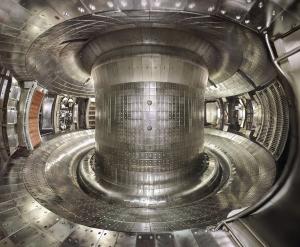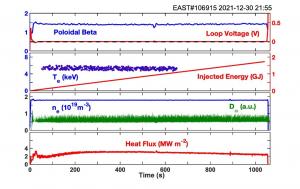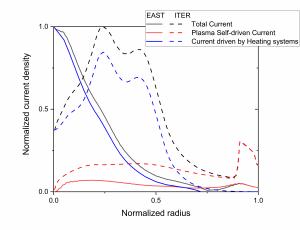To sustain this plasma it was necessary to control plasma equilibrium and position over long time scales, which is challenging for the magnetic
diagnostics since low drifts of the electronics must be maintained. Similarly, large divertor heat fluxes must be handled over long time scales at a level of ~ 3 MWm-2, impurities (particularly tungsten from the divertor) must be prevented from contaminating and cooling down the plasma, and good pumping of the edge plasma neutrals must be maintained to ensure that the plasma density does not rise in an uncontrolled way, terminating the plasma discharge.
All these scientific and technical aspects have been demonstrated on EAST, which was specifically built for demonstrating long-pulse high-performance operation with an ITER-like configuration and heating schemes. Thus, the success of EAST's experiment in maintaining a high temperature plasma beyond 1000 seconds is an important milestone on the way to exploring and controlling plasmas that will be required for ITER and future fusion reactors.




